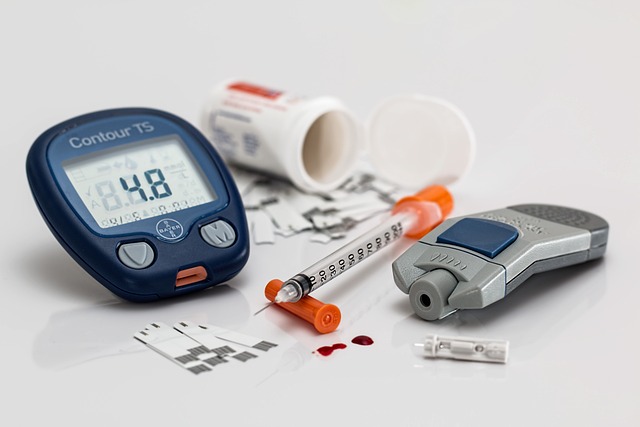Heart disease remains one of the leading causes of death worldwide, affecting millions of people each year. Despite its prevalence, many individuals fail to recognize the early warning signs or take proactive steps to prevent it. The good news is that heart disease is often preventable with lifestyle changes and regular medical check-ups. By understanding the risk factors, recognizing subtle symptoms, and adopting heart-healthy habits, you can significantly reduce your chances of developing this life-threatening condition.
In this article, we’ll explore the early signs of heart disease, discuss its common risk factors, and provide actionable prevention tips to help you protect your cardiovascular health.
Understanding Heart Disease
Heart disease refers to a range of conditions that affect the heart’s structure and function. These include coronary artery disease (narrowing of the arteries), heart attacks, arrhythmias (irregular heartbeats), heart failure, and congenital heart defects. While some forms of heart disease are genetic, most cases are linked to modifiable lifestyle factors such as diet, physical activity, smoking, and stress.
The key to combating heart disease lies in early detection and prevention. Being aware of the warning signs and taking steps to mitigate risks can save lives.
Recognizing Early Signs of Heart Disease
Heart disease doesn’t always announce itself with dramatic symptoms like chest pain. In fact, many early signs are subtle and easily overlooked. Here are some red flags to watch for:
1. Chest Discomfort
- Persistent or intermittent pressure, tightness, or pain in the chest (angina) could indicate reduced blood flow to the heart. This discomfort may radiate to the arms, neck, jaw, or back.
2. Shortness of Breath
- Difficulty breathing during routine activities or while lying down may signal an underlying heart issue. It’s often caused by fluid buildup in the lungs due to poor heart function.
3. Fatigue
- Unexplained fatigue, especially in women, can be an early sign of heart disease. If simple tasks leave you feeling unusually tired, it’s worth investigating further.
4. Heart Palpitations
- Irregular heartbeats, fluttering sensations, or a racing heart may indicate arrhythmias or other cardiac problems.
5. Swelling (Edema)
- Swollen ankles, feet, legs, or abdomen can result from fluid retention, which is often associated with heart failure.
6. Dizziness or Lightheadedness
- Feeling faint or dizzy, particularly during exertion, may suggest inadequate blood flow to the brain due to a weakened heart.
7. Cold Sweats
- Breaking out in a cold sweat without obvious cause can be a symptom of an impending heart attack.
8. Nausea or Indigestion
- Some people, especially women, experience gastrointestinal symptoms like nausea, indigestion, or vomiting as a sign of heart trouble.
If you notice any of these symptoms—especially if they occur together or worsen over time—seek medical attention immediately. Early intervention can prevent serious complications.
Common Risk Factors for Heart Disease
Understanding your risk factors is crucial for prevention. While some factors are beyond your control, many can be managed through lifestyle changes. Common risk factors include:
Non-Modifiable Risk Factors
- Age: The risk increases with age, particularly for men over 45 and women over 55.
- Family History: A family history of heart disease raises your risk, especially if a close relative had it at a young age.
- Gender: Men are generally at higher risk, but women’s risk rises after menopause.
Modifiable Risk Factors
- High Blood Pressure: Hypertension damages arteries and forces the heart to work harder.
- High Cholesterol: Elevated LDL (“bad”) cholesterol contributes to plaque buildup in arteries.
- Smoking: Tobacco use narrows blood vessels and reduces oxygen supply to the heart.
- Obesity: Excess weight strains the heart and increases the likelihood of other risk factors like diabetes and hypertension.
- Physical Inactivity: Lack of exercise weakens the cardiovascular system and promotes unhealthy habits.
- Poor Diet: Diets high in saturated fats, trans fats, salt, and sugar increase heart disease risk.
- Diabetes: High blood sugar levels damage blood vessels and nerves that control the heart.
- Chronic Stress: Prolonged stress elevates blood pressure and encourages unhealthy coping mechanisms like overeating or smoking.
Prevention Tips for a Healthy Heart
Preventing heart disease starts with making smart choices every day. Here are practical strategies to keep your heart strong and healthy:
1. Adopt a Heart-Healthy Diet
- Focus on whole, nutrient-dense foods such as fruits, vegetables, whole grains, lean proteins, and healthy fats.
- Limit processed foods, sugary beverages, and foods high in sodium and saturated fats.
- Incorporate omega-3-rich foods like salmon, walnuts, and flaxseeds to support heart health.
2. Stay Physically Active
- Aim for at least 150 minutes of moderate-intensity aerobic activity (like brisk walking) or 75 minutes of vigorous activity per week.
- Include strength training exercises twice a week to build muscle and improve metabolism.
3. Maintain a Healthy Weight
- Losing even a small amount of excess weight can lower blood pressure, improve cholesterol levels, and reduce strain on the heart.
4. Quit Smoking
- If you smoke, quitting is one of the best things you can do for your heart. Seek support from healthcare providers or cessation programs if needed.
5. Manage Stress
- Practice relaxation techniques such as deep breathing, meditation, yoga, or mindfulness to reduce stress levels.
- Prioritize hobbies, social connections, and activities that bring joy and fulfillment.
6. Monitor Key Health Metrics
- Regularly check your blood pressure, cholesterol, and blood sugar levels. Work with your doctor to manage these numbers within healthy ranges.
t7. Limit Alcohol Consumption
- Drink alcohol in moderation, if at all. For most adults, this means no more than one drink per day for women and two drinks per day for men.
8. Get Enough Sleep
- Poor sleep is linked to high blood pressure, weight gain, and inflammation—all of which increase heart disease risk. Aim for 7–9 hours of quality sleep each night.
9. Schedule Regular Check-Ups
- Visit your healthcare provider annually for screenings and advice tailored to your personal health profile.
When to See a Doctor
If you experience any of the following, consult a healthcare professional promptly:
- Persistent chest pain or discomfort
- Unexplained fatigue or shortness of breath
- Rapid or irregular heartbeat
- Sudden swelling in the extremities
- Symptoms worsening despite lifestyle changes
Early diagnosis and treatment can make a significant difference in outcomes. Don’t hesitate to advocate for your health.








